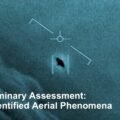NASA funded scientists have identified a celestial “danger zone” where asteroids approaching Earth can go undetected by the system designed to spot such objects until it is too late. In the past, such space rocks have caused significant damage, even possible planet-wide extinctions, and if large enough, they can represent an imminent danger to nearly all life on Earth.
BACKGROUND: ASTEROID DETECTION A GROWING PRIORITY
In 1994, Congress tasked NASA with developing a system to detect any and all asteroids, often referred to as Near Earth Objects (NEOs) that were larger than 1 kilometer is size. That goal was updated in 2005, requiring the American space agency to detect and catalogue 90% of all NEOs larger than 140 meters by the end of 2020. According to the researchers involved in the latest study, that goal is far from complete.
In 2019, one of humanity’s worst fears nearly came true when a 100-meter-wide NEO whizzed by Earth at only 70,000 km distance, a very close call astronomically speaking. And that near miss occurred with only 24 hours warning from astronomers. Now, according to a piece in the UK Telegraph, scientists funded by NASA believe they have figured out how the 2019 near-miss happened, as well as how such future incidents can be detected much earlier.
ANALYSIS: HOW ARE ASTEROIDS SNEAKING UP ON EARTH?
After analyzing data from previous NEO events, researchers from the University of Hawai’i (UH) noted that due to a quirk in the Earth’s rotation, NEOs like the one that just missed Earth in 2019 can appear stationary to detection satellites if they approach from the east, particularly in the nighttime sky between midnight and 2 a.m. As such, the satellite network that looks for these types of objects dismisses the NEO as something stationary, instead of marking them as the potentially imminent threat they may actually be.
“Surveys should take extra care when surveying the sky in this direction, and aggressively follow up new slow-moving objects,” reads the research published in the journal Icarus.
UH Professor Richard Wainscoat, who led the research team behind the latest discovery, said people “shouldn’t lose sleep” over fears of an asteroid hitting Earth. However, he noted, “In the event that we find something that is going to hit the earth we would like to do something about it.”
“It’s not a matter of finding them and sitting there and letting it hit,” explained Wainscoat of the survey and detection effort.
The Debrief previously reported on NASA’s DART mission, which will test the ability of a human spacecraft to change the trajectory of such an object by slamming into an asteroid later this year. If such technology is expected to protect earth from a potentially catastrophic NEO, a detection window of four weeks may be enough time to act.
OUTLOOK: PLANS FOR BETTER ASTEROID DETECTION & POSSIBLE NEO DEFLECTION
Given their study’s results, Wainscoat says it should be possible to update the algorithms to spot these slow-moving objects, a critically needed change since as many as 50% of the objects that approach from the east may experience this slowing effect. If done properly, he says, these objects should be spotted as much as four weeks ahead of a potential impact, and not 24 hours.
Unfortunately, the goal of detecting 90% of dangerous NEOs by 2020 has fallen woefully short, with Wainscoat stating that only 40% of such objects have been catalogued.
“We have a long way to go,” said Wainscoat. “Once we have catalogued more than 90 per cent, the number that can creep up on us from this direction will be small.”
Follow and connect with author Christopher Plain on Twitter: @plain_fiction
